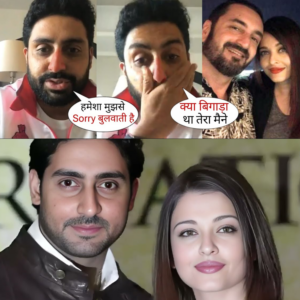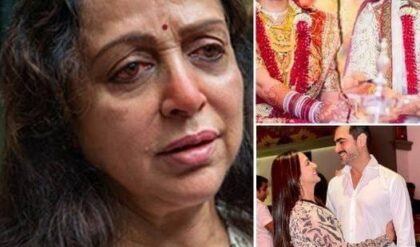Lawrence Bishnoi Creating Image of ‘Hindu Don’ to Become Criminal No.1?
Lawrence Bishnoi, a name that has become synonymous with fear and notoriety in India, is reportedly crafting an image of himself as a ‘Hindu Don’ in a bid to become the country’s top criminal. This transformation is not just about adopting a new moniker; it involves a calculated strategy to gain influence, power, and protection within the current socio-political climate.
FULL VIDEO:
The Rise of Lawrence Bishnoi
Born in 1993 in the Fazilka district of Punjab, Lawrence Bishnoi’s journey into the world of crime began during his college years. Initially involved in student politics at Panjab University, Bishnoi’s activities soon escalated from campus disputes to serious criminal offenses. By 2014, he had established himself as a formidable gangster, with a network that extended beyond Punjab to Delhi, Haryana, Himachal Pradesh, and Rajasthan.
The ‘Hindu Don’ Persona
Criminal Activities and Network
Despite being imprisoned since 2014, Bishnoi’s influence has only grown. He operates a vast criminal network from behind bars, orchestrating contract killings, extortion, and other illegal activities. His gang, reportedly comprising over 700 members, is involved in high-profile murders, including those of Punjabi singer Sidhu Moosewala and Karni Sena chief Sukhdev Singh.
Bishnoi’s operations are sophisticated, utilizing social media platforms like Instagram and Snapchat for communication and coordination. His network extends internationally, with significant connections in Canada, where associates like Goldy Brar operate. This global reach has made Bishnoi a formidable figure in the world of organized crime.
Government and Law Enforcement Response
The Indian government and law enforcement agencies have been grappling with the challenge of curbing Bishnoi’s activities. Despite being incarcerated, Bishnoi continues to wield significant power, raising questions about the effectiveness of the prison system and the ability of security agencies to dismantle his network.
The National Investigation Agency (NIA) has charged Bishnoi under the stringent anti-terror law UAPA, drawing comparisons between his gang and Dawood Ibrahim’s D-Company. The NIA’s chargesheet highlights Bishnoi’s modus operandi, which includes starting with petty crimes and gradually transitioning to more serious offenses like drug trafficking, targeted killings, and extortion.
Public and Media Perception
The media portrayal of Bishnoi as a ‘Hindu Don’ has sparked a range of reactions. Some view it as a dangerous glorification of a criminal, while others see it as a reflection of the socio-political realities in India. The narrative of a gangster aligning himself with religious and nationalist sentiments to gain power is not new, but Bishnoi’s case has brought it into sharp focus.
Conclusion
Lawrence Bishnoi’s calculated efforts to create an image of himself as a ‘Hindu Don’ are part of a broader strategy to cement his position as India’s top criminal. By leveraging religious and communal identities, he aims to gain influence, power, and protection. As law enforcement agencies continue to grapple with the challenge of curbing his activities, the story of Lawrence Bishnoi serves as a stark reminder of the complexities and dangers of organized crime in India.
News
SHOCKNG NEWS| Salman Khan Marriage with Aishwarya Rai Confirm/Aishwarya Rai After Divorce Marriage With Salman
Salman Khan Marriage with Aishwarya Rai Confirm/Aishwarya Rai After Divorce Marriage With Salman . . . . . Aishwarya Rai and Salman Khan: Secret Relationship Rumors Amid Marital Struggles with Abhishek Bachchan In Bollywood’s glamorous world, the love lives…
Bachchan Family in Tears: Aishwarya Rai’s Hospitalization Stirs Deep Emotions in Amitabh, Abhishek, and Jaya
Amitabh Bachchan, Abhishek Bachchan, and Jaya Bachchan Get Emotional as Aishwarya Rai Is Admitted to the Hospital Bollywood’s iconic family, the Bachchans, is known for their unity and love for one another. However, recent reports of Aishwarya Rai Bachchan…
Amitabh, Abhishek, and Jaya Bachchan Emotional as Aishwarya Rai is Hospitalized
Amitabh Bachchan, Abhishek Bachchan, and Jaya Bachchan Get Emotional as Aishwarya Rai Is Admitted to the Hospital Bollywood’s iconic family, the Bachchans, is known for their unity and love for one another. However, recent reports of Aishwarya Rai Bachchan…
Amitabh, Abhishek, and Jaya Bachchan Emotional as Aishwarya Rai is Hospitalized
Amitabh Bachchan, Abhishek Bachchan, and Jaya Bachchan Get Emotional as Aishwarya Rai Is Admitted to the Hospital Bollywood’s iconic family, the Bachchans, is known for their unity and love for one another. However, recent reports of Aishwarya Rai Bachchan…
Amitabh Bacchchan,Abhisekh Bachchan,Jaya got emotional for Aishwarya Rai admitted to Hospital
Amitabh Bachchan, Abhishek Bachchan, and Jaya Bachchan Get Emotional as Aishwarya Rai Is Admitted to the Hospital Bollywood’s iconic family, the Bachchans, is known for their unity and love for one another. However, recent reports of Aishwarya Rai Bachchan…
Abhishek Bachchan Opens Up About Preserving Bond with Aishwarya Rai Post-Conflict
Abhishek Bachchan Reveals the Secret to Maintaining His Relationship with Aishwarya Rai Post-Fight Abhishek Bachchan and Aishwarya Rai are undoubtedly one of Bollywood’s most admired couples. With their picture-perfect appearances and public displays of love, they have set relationship…
End of content
No more pages to load





